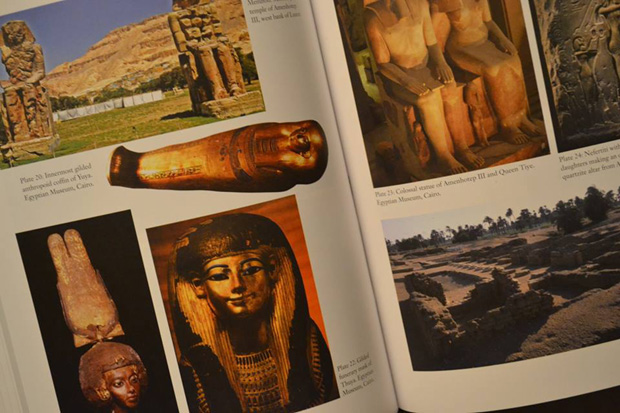Researchers using a CT scanner have discovered new evidence about the death of Pharaoh Ramesses III and the embalming of Pharaoh Tutankhamun.
According to Egyptian researchers, CT scans of the mummy of Ramesses III show the pharaoh died a violent death, suggesting he was murdered by several assailants. Meanwhile, scans of Tutankhamun’s mummy reveal that the boy king was given extensive reconstructive beauty treatment before he was buried.
Zahi Hawass, former Ministry of State for Antiquities, and Sahar Saleem, Professor of Radiology at the Faculty of Medicine of Cairo University, discovered the ground breaking new evidence concerning New Kingdom of Egypt royal mummies using a computerised tomography scanner (CT scanner). CT scanners record X-ray images taken from different angles and combine them to create cross-sections of objects. The new scans of the royal mummies have produced never-before-seen images of Tutankhamun, Ramesses III, and other New Kingdom pharaohs.
Hawass and Saleem present their new findings about the New Kingdom royal mummies in a new book Scanning the Pharaohs, launched in Cairo on March 23.
[caption id="attachment_484519" align="alignnone" width="620"] Hawass signing copies of Scanning the Pharaohs at the book launch in Cairo.[/caption]
Hawass signing copies of Scanning the Pharaohs at the book launch in Cairo.[/caption]
Pharaoh may have been murdered by several conspirators
The recent study of the CT scans of the mummy of Ramesses III suggest that it's likely several conspirators, using different weapons, attacked and killed the king.
It had long been suspected that Ramesses III had been murdered, since an Ancient Egyptian papyrus tells of a plot called the “Harem Conspiracy” to kill the pharaoh. The paper tells that a wife of Ramses III wanted to kill her husband in order that her son, prince Pentawere, could take the throne. The papyrus records the trial of more than a dozen conspirators who were arrested, tried and executed. It was not clear from the writings if the plot succeeded, however there is now strong evidence that the pharaoh died a violent death.
Studying the images of the CT scan of Ramses III, Hawass and Saleem discovered a cut wound on the pharaoh’s throat that was, almost certainly, the cause of death. It is thought that the injury was inflicted by a conspirator using a sharp knife. New evidence indicates that part of the pharaoh’s left foot, including part of his big toe, had been hacked off; perhaps with an axe. The newly discovered finding supports the theory that several assailants using different weapons simultaneously attacked the king.
When the pharaoh was mummified, the embalmers placed linen in place of the missing toe. The embalmers also placed seven eye-of-Horus amulets, which were believed to have magical healing powers, on the injured throat and feet of the king so that they would regenerate in the next world.
[caption id="attachment_484521" align="alignnone" width="620"] Illustrations from the book Scanning the Pharaohs.[/caption]
Illustrations from the book Scanning the Pharaohs.[/caption]
Tutankhamun mummy received a special beauty treatment
The high-powered CT scanner was also used to reveal new aspects of the mummy of Tutankhamun. Researchers discovered that ancient embalmers skillfully placed packing material beneath the skin of Tutankhamun’s face so he would look lifelike for the next world, a precursor to modern plastic surgery fillers. The Pharaoh’s limbs were also fleshed out with packing material in order to preserve their shape.
According to Saleem, Tutankhamun was not the only pharaoh to have this treatment. King Ramses III also had subcutaneous packing, as well as most of the royal mummies of the New Kingdom that were studied.
Comments
Leave a Comment